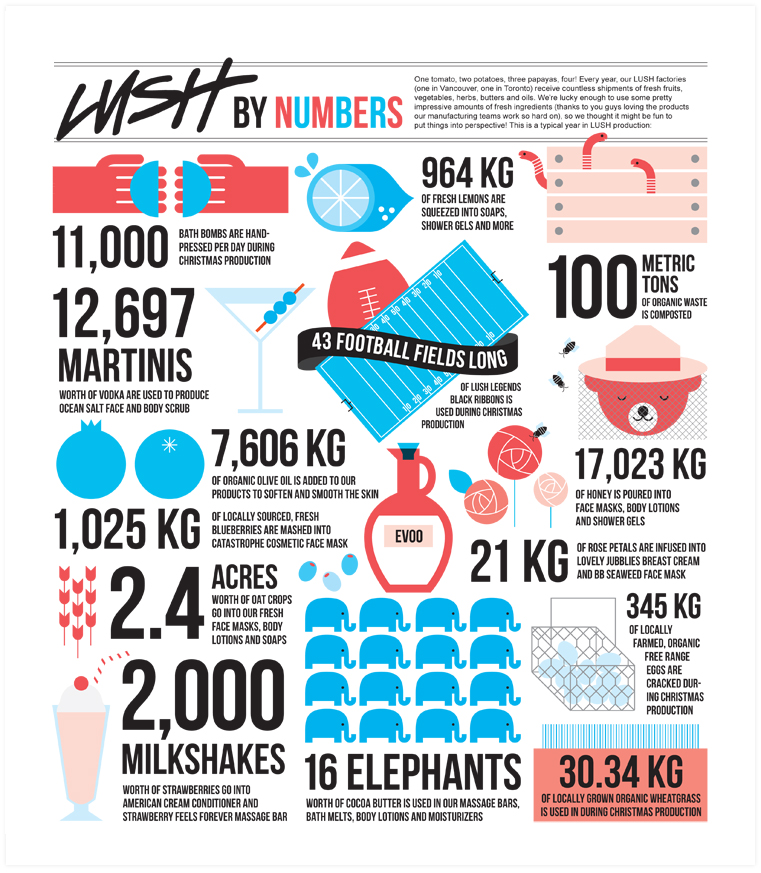
Photo source: Pixabay
In 2019, digital business models are a key aspect of every consumers’ life. For myself particularly – as a blogger – digital business models play a key role in both my personal and professional aspects of daily life.
Like a high percentage of other millennials, I rely on my social media channels to communicate with the world around me, from talking to my friends to partnering with brands as an influencer. As someone who is extremely busy with day-to-day life, I also find myself taking advantage of apps and e-commerce stores to purchase everything from my food and cleaning products to fashion and beauty items.
Of all the brands that I use on a daily basis, Lush is one brand that I feel a distinct connection to.
The brand that turned bathing into an art form…
Lush, the brand that put bath bombs on the map, champions organic, natural, hand-made, and in many cases, vegan, beauty products. Report after report has stated that many high street retailers are struggling, and yet Lush is doing so well that it’s either opening new stores or renovating old ones to enhance and improve the ‘user-experience’ further.
My local Lush store underwent a relocation in Exeter in September 2017 to a much larger store that had been designed with a focus on innovation and beauty. From the perspective of a blogger with a fascination for Lush, it’s clear from the design of the new store that it has been created to be Instagram-worthy, which is, of course, in keeping with Lush’s policy of using user-generated content to market their products and brand.
With 541,000 Instagram followers for the main UK Lush Instagram page and around 10,000 followers for each regional Instagram page, Lush UK has an Instagram presence that most beauty companies can only dream of achieving. When you consider the fact that Lush also has 202,000 followers on their main Twitter page and 28,000 on the Lush Kitchen page, not to mention a strong Facebook presence, it’s clear that Lush are doing something extraordinary when it comes to their digital business model.
Lush works with influencers regionally, inviting them to attend Lush parties throughout the year. As a blogger who has attended many Lush parties, I can vouch for how incredible they are. These parties are designed to introduce new product ranges, such as the Valentine’s range or the Christmas range. Throughout the events, the Lush team are snapping photos and streaming videos of what’s going on, as are the bloggers – myself included. This type of partially organic, user-generated content marketing is a staple in Lush UK’s digital business model.
What’s even more interesting about how Lush operates as a business is the fact that this 24-year-old beauty brand follows a ‘no advertising policy’. As part of this policy, the company does not tend to spend money on TV advertising campaigns or celebrity endorsement, instead, they rely on user-generated content, which often comes from micro influencers like myself, as well as simply coming from Lush customers.

Photo credit: Pixabay
Going back to the start…
Until 15-years-ago, Lush’s business model was largely retail-based. Then, Jack Constantine, the son of Lush founders Mark and Mo Constantine, joined the brand, going on to reinvent the Lush bath bomb, creating the first double-layered creation, which led to the initiation of the social media trend for sharing Lush ‘bath art’ online.
Since then, as the Chief Digital Officer, Jack Constantine has taken charge of the brand’s digital marketing by creating websites and social media accounts and introducing e-commerce to the brand. Today, Lush’s e-commerce side of the brand contributes around 28% of the £1.1 billion business.
What Jack Constantine is doing is establishing a ‘digital estate’ where the digital infrastructure of the brand is being redeveloped to make it as successful as possible – not because it isn’t already successful but to enhance that success further.

Infographic sourced from The CDR
The digital business model already in place is extremely successful…
For Lush, it’s hard to imagine that the brand could be any more successful. Lush’s online presence is a solid one, which is driven by a combination of viral content – photos and videos – and organic, user-generated content. (Saltzman, 2017).
What it’s essential to bear in mind is that for Lush, a significant amount of the brand’s success came after the creation of the double-layered bath bomb which ignited excitement about the brand and its products online and started the viral craze around Lush. As a business, Lush was successful prior to excitement on social media and online igniting around the brand, however, Lush’s online presence and digital business model is what has put Lush in the highly successful position it is in today. There is a constant yearning from the online community for the next Lush product range to be announced, and that is a key aspect of what makes Lush’s digital business model so successful.
Videos created by Lush’s team members often go viral. Last year, an image of Lush team members making a glitter bubble bar went viral, as a result, the bubble sold out and there was an outcry to be able to buy the glitter-covered jumper the staff member was wearing at the time. Lush created the sought-after jumper and it was on sale within two weeks. (Ahlquist, 2018). Part of the Lush digital business strategy is remaining reactive to customers and contributing back to the community, which this scenario was a clear example of.
One aspect of Lush’s digital business model that has set the brand aside from its competitors such as The Body Shop, for instance, is the community that it has created, cared for, and nurtured. This is highly unusual for such a successful brand, and yet, it is this business model that has helped position Lush where they are today.
As a brand, Lush realises that as a business that was largely built on word-of-mouth marketing, that the use of social media as part of their digital business model, combined with the ‘sharability’ of the overall Lush experience, plays a vital role not only in Lush’s success but also in regards to how the brand remains relevant.
The entire design of the Lush stores focuses on beautiful, innovative design that is as Instagram-worthy as possible, which demonstrates a clear crossover between traditional business models – the use of design as a key tool – and digital business models. This was something that I noticed when I attended the Lush Exeter launch party in 2017.
An interesting aspect of Lush’s digital business model is the fact that as a brand they realise that before social media, their customers were extremely active on forums and were taking part in other online communities, which may have led them to the concept of creating their own Lush communities.
It is a well-known fact that today, consumers have more power over brands and what they produce than ever before. Lush has taken this information and cultivated knowledge from their many communities to ensure that their products reflect what their customers want. For instance, there has recently been an outcry relating to single-use plastic, so Lush has not only created a naked product range but they have also launched a naked flagship store, where every product sold is naked.
It’s easy to see how Lush has utilised their digital business model to increase their success. By creating a strong social media presence that focuses on the aspects of beauty that their customers want to learn more about, such as ethical beauty, Lush has created a hugely successful digital business model.
Last year, when news of Iceland’s Christmas Advert being banned for being too political, and the public outcry to save the orangutans that followed, Lush chose to act. They brought back a range of orangutan-shaped soaps that were sold with a high percentage of the profits being donated to the orangutans in Borneo. What was clever about this range was the fact that they shared images of it online with the hashtag ‘#OnceTheyreTheyreGone’ which related both to the orangutans and the limited number of these soaps that were available to buy in-store only, thus driving sales and traffic via their online channels to their stores.
Lush was already successful prior to the creation of their digital presence…
As mentioned above, Lush was already successful prior to the creation of their digital business model. However, what it’s important to bear in mind is how successful they were, and with that to consider how crucial their physical stores are in regards to their success as a global brand.
Brandi Halls, Director of Brand Communications for Lush Cosmetics, said in an interview in 2017, it is Lush’s customer experience that sets the brand apart from its competitors and is such aspect of its success.
She also commented on the fact that it’s Lush’s unique stores and enthusiastic staff that has helped to put the brand on the map, which is why they are constantly taking steps to enhance the in-store experience offered, despite their digital success. This is something that Jack Constantine has also commented on numerous times, however, what he has added is that this success and this experience is further enhanced by Lush’s online presence, and by extension by its digital business model.
Digital sales may be soaring but Lush believes that nothing can compare to the feeling of touching and playing with their innovative products while learning more about them from their passionate team members. (Saltzman, 2017).
Even with all of the success that Lush has in the UK today, once a year they hold an annual showcase event in Manchester which always sells out as soon as tickets are released and always goes viral. (Bowles, 2019).
Video sourced from YouTube
This event might be a traditional one but what it is vital to remember is the fact that this event is only as successful as it is because of the online aspect of its organic marketing, user-generated content, and the virality of pictures and videos shared. Because of the online aspect of this event, it has become an unmissable event within the beauty industry.
Sold as an immersive event, the Lush Showcase isn’t just a place for consumers to snap shots of all the latest Lush products, it’s also an event that provides a large amount of digital content for Lush’s own channels. The entire event is filmed, photographed and live-streamed on social media. (Gilliland, 2017).
Lush’s digital business model is an incredibly complex one – there are multiple levels of strategy in place, with each strategy differing from region to region. However, the above is an overview of what makes Lush UK’s digital business model not only so successful but so unique and how both its traditional and digital business models combine to enhance the brand’s success further.
References:
Ahlquist, M. (2018). Behind the seams: how swag became Lush’s latest campaign. Retrieved from https://uk.lush.com/article/behind-seams-how-swag-became-lushs-latest-campaign
Bowles, E. (2019). Lush open their first Naked shop in the UK. Retrieved from https://beta.lush.com/en/article/lush-is-opening-a-naked-shop-in-manchester-
Lush Fresh Handmade Cosmetics UK. Retrieved from https://uk.lush.com/
Saltzman, S. (2019). How Lush is Winning at Both Online and Brick-and-Mortar Beauty Retail. [online] Fashionista. Available at: https://fashionista.com/2017/08/lush-cosmetics-business-strategy [Accessed 3 Mar. 2019].
Tang, A., Kwok, S., Boost, R., Yuen, S., Ng, A., & Kwok, S. et al. (2019). Lush explores the two biggest dilemmas when retail meets digital. Retrieved from https://www.marketing-interactive.com/features/lush-speaks-of-the-two-dilemmas-when-retail-meets-digital/
Gilliland, N. (2017). How Lush delights customers with brand marketing, strong values and digital innovation – Econsultancy. Retrieved from https://econsultancy.com/how-lush-delights-customers-with-brand-marketing-strong-values-and-digital-innovation/





Leave a Reply